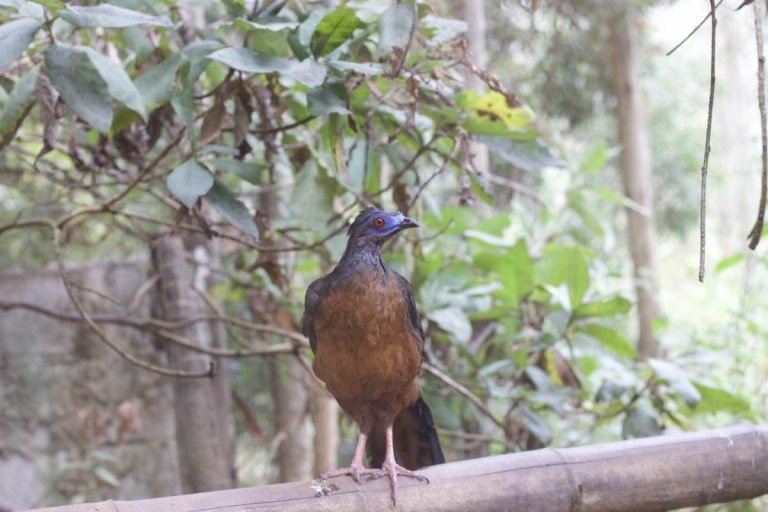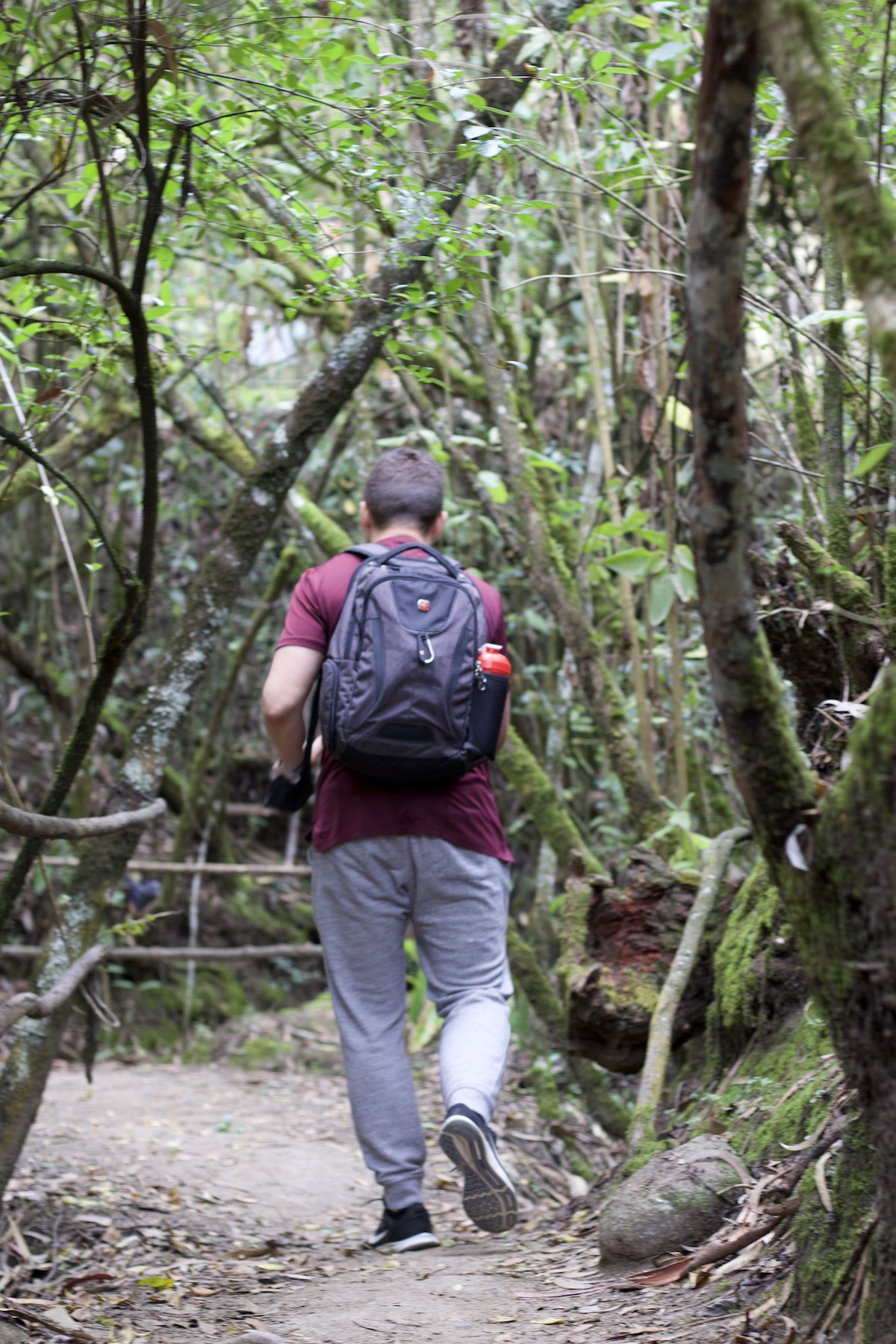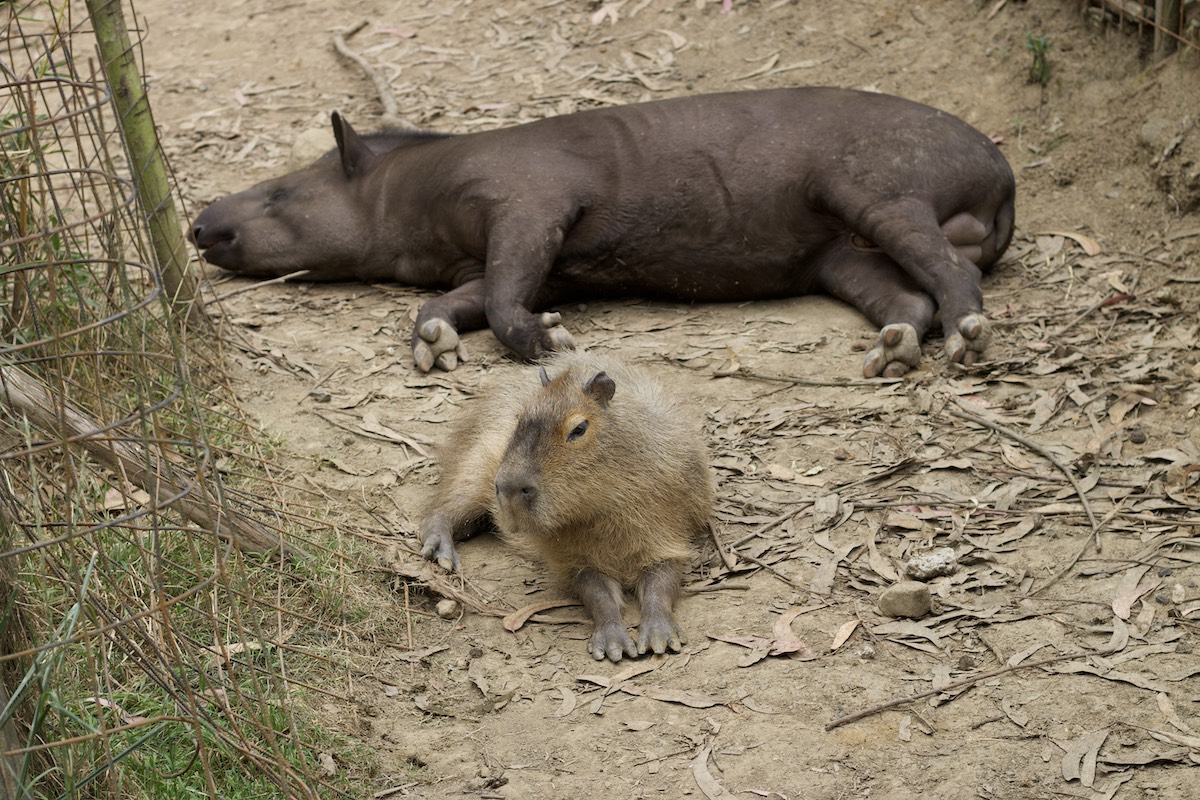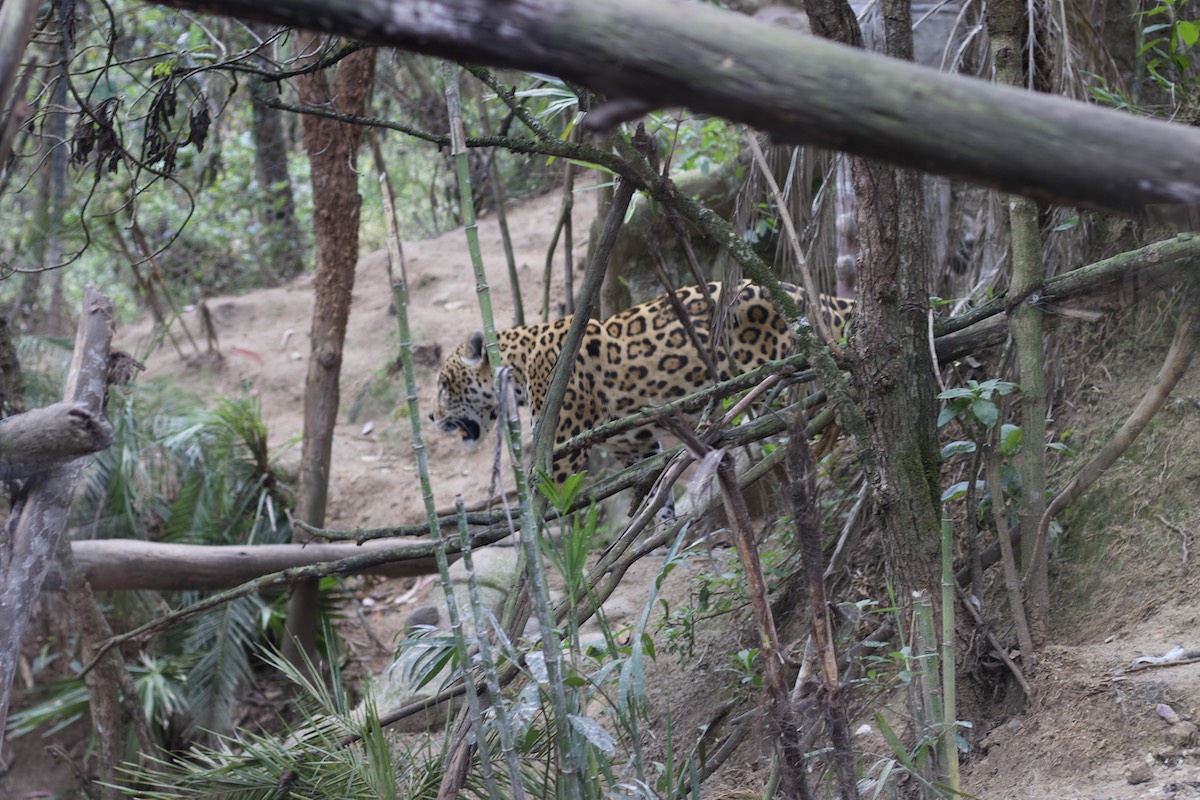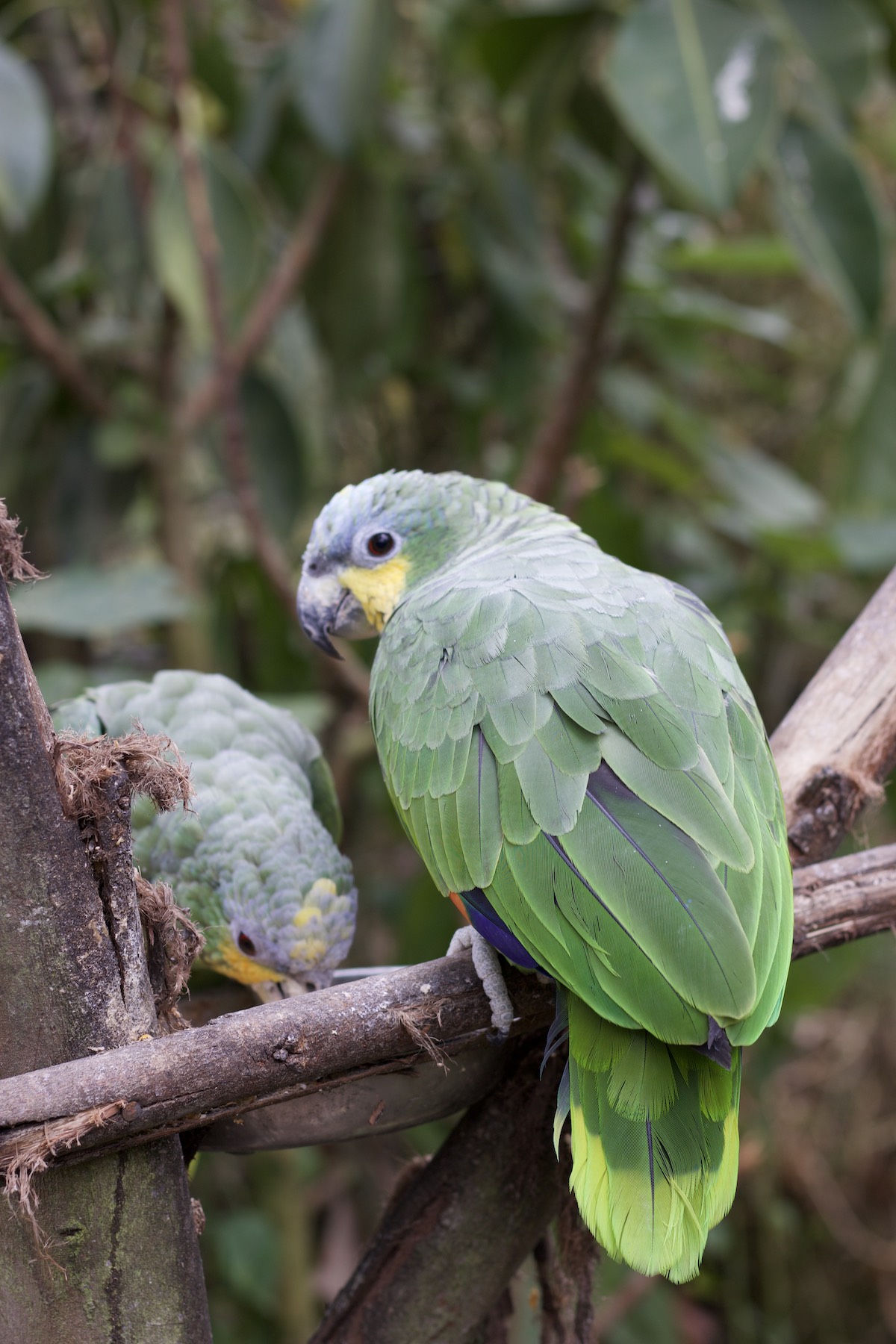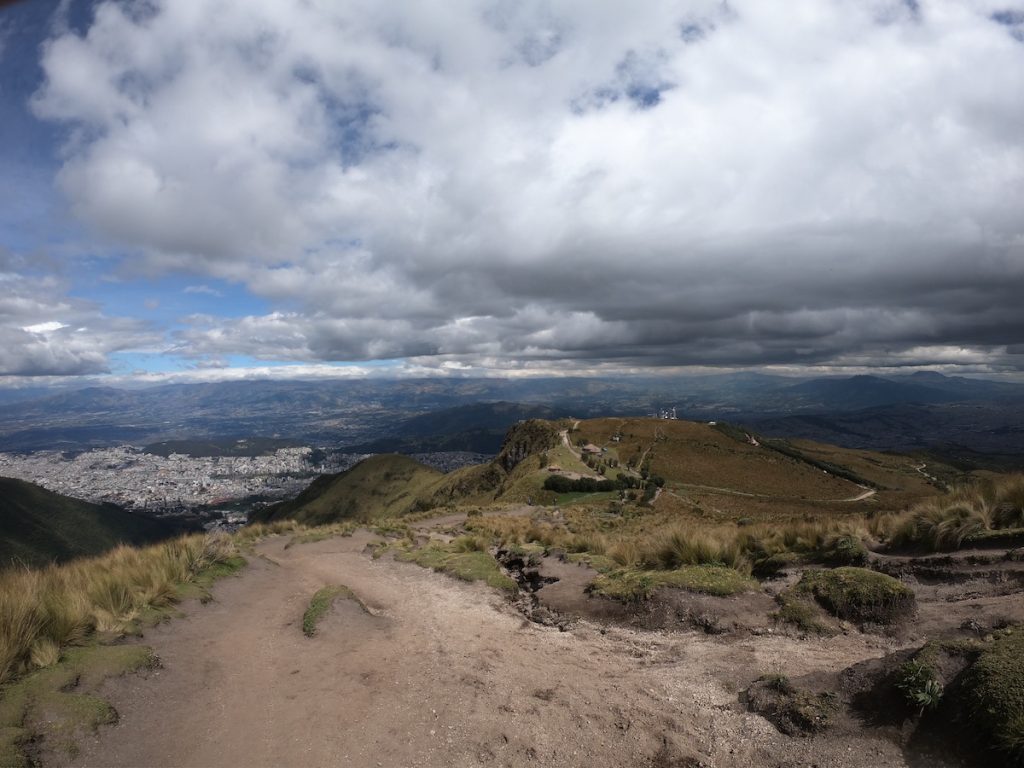I get it—some people might assume that a trip to the zoo is just for kids, or they might find it unexciting to see animals outside their natural environment. And, of course, there are those who feel it’s cruel to see animals confined in tight spaces. Honestly, I used to feel the same way. But our visit to Amaru Zoológico Bioparque in Cuenca completely changed my perspective. This isn’t your typical zoo—it’s an experience that might just shift how you view animal conservation and the role of zoos.
One of the most fascinating activities we found in Cuenca, Ecuador was visiting Amaru Bioparque. This isn’t like the typical zoo you might remember from school field trips. Instead, it’s a unique park dedicated to rescuing and protecting wildlife. During our travels on the Ecuador mainland, we made a stop here, and honestly, we highly recommend it to anyone visiting the area.
Amaru Zoológico Bioparque is a non-profit environmental organization in Cuenca that offers an extraordinary experience, showcasing the creatures and plants that highlight Ecuador’s rich natural and cultural diversity.
In this guide, I’ll share details of our visit to Amaru Bioparque, also commonly known as Amaru Zoo, along with some practical tips to help you plan your own visit to this amazing place.
Looking back, visiting Amaru Bioparque required some insider knowledge – from planning the best time to visit to figuring out transportation and managing the hillside terrain. Skip the uncertainty I faced and get a FREE personalized Ecuador trip quote from my trusted local experts who know how to perfectly incorporate this unique experience into your Cuenca visit. Your booking helps support both this blog and local Ecuadorian communities.
Table of Contents
Plan perfect trip to Ecuador & Galapagos
I spent countless hours researching everything about traveling to Ecuador, and I created this blog for fellow travel enthusiasts who want the best, most reliable information. But if you want to save time, we’ve partnered with the top local agency to plan your dream trip.
How to Get to Amaru Zoológico Bioparque
By Car
To find Amaru Zoo, head to the other side of the roadway, directly across from Hospital del Rio. From the highway, take a left onto a gravel road that winds uphill toward the zoo. It might be a bit tricky to locate at first, but look out for the Amaru Zoologica marker to guide you. We were relieved to see that there’s a spacious parking lot, making it convenient if you’re driving there.
By Taxi
If you’re not driving, taking a taxi to Amaru Zoo is a convenient option. A taxi ride from the center of Cuenca costs around $4 to $5. While getting there is easy, finding a taxi for the return trip can be a bit challenging, especially if it’s later in the day.
When we visited, we ended up waiting for a cab to drop off other visitors at the zoo. If that doesn’t work, don’t hesitate to ask a friendly family for a ride back to town—we did this, and it worked out perfectly! It’s all part of the adventure when exploring off-the-beaten-path places like this.
The Climb to Amaru Zoológico Bioparque
The park is built into the side of a hill, so it’s like going to the zoo and hiking at the same time. Since it is located on a mountainside, the trip involves a lot of uphill walking.
The trek through Amaru Bioparque can be challenging, but it’s manageable for most people if you take your time. You definitely don’t need to be an athlete to enjoy it, though if you have knee issues, it might be tough to go too far.
The paths are not only steep but also involve walking on boards at times to avoid muddy patches and puddles. We found it to be a rewarding hike, but it’s certainly not ideal for the elderly or those using wheelchairs. If you’re visiting with kids, it’s best to leave strollers behind.
Once you make it to the top, you’re rewarded with a stunning panoramic view of the city below. It’s definitely worth the climb!
Entrance Fee to Amaru Bioparque
The admission fee costs $6.00 for adults. Tickets for children aged 2 to 12 years cost $4.00 and $5.00 for teenagers aged 13 to 17 years. Senior citizens can get a 50% discount on their entrance fee.
When to Visit Amaru Bioparque
The Amaru Bioparque is open from Mondays to Sundays and operates from 9 a.m. to 4 p.m. The zoo is closed though every December 25.
Our Amaru Zoo Experience
We spent three hours in the zoo, and the animals are free to roam about, just as I’d heard. What makes this zoo unique is that many of the animals do not appear to be confined.
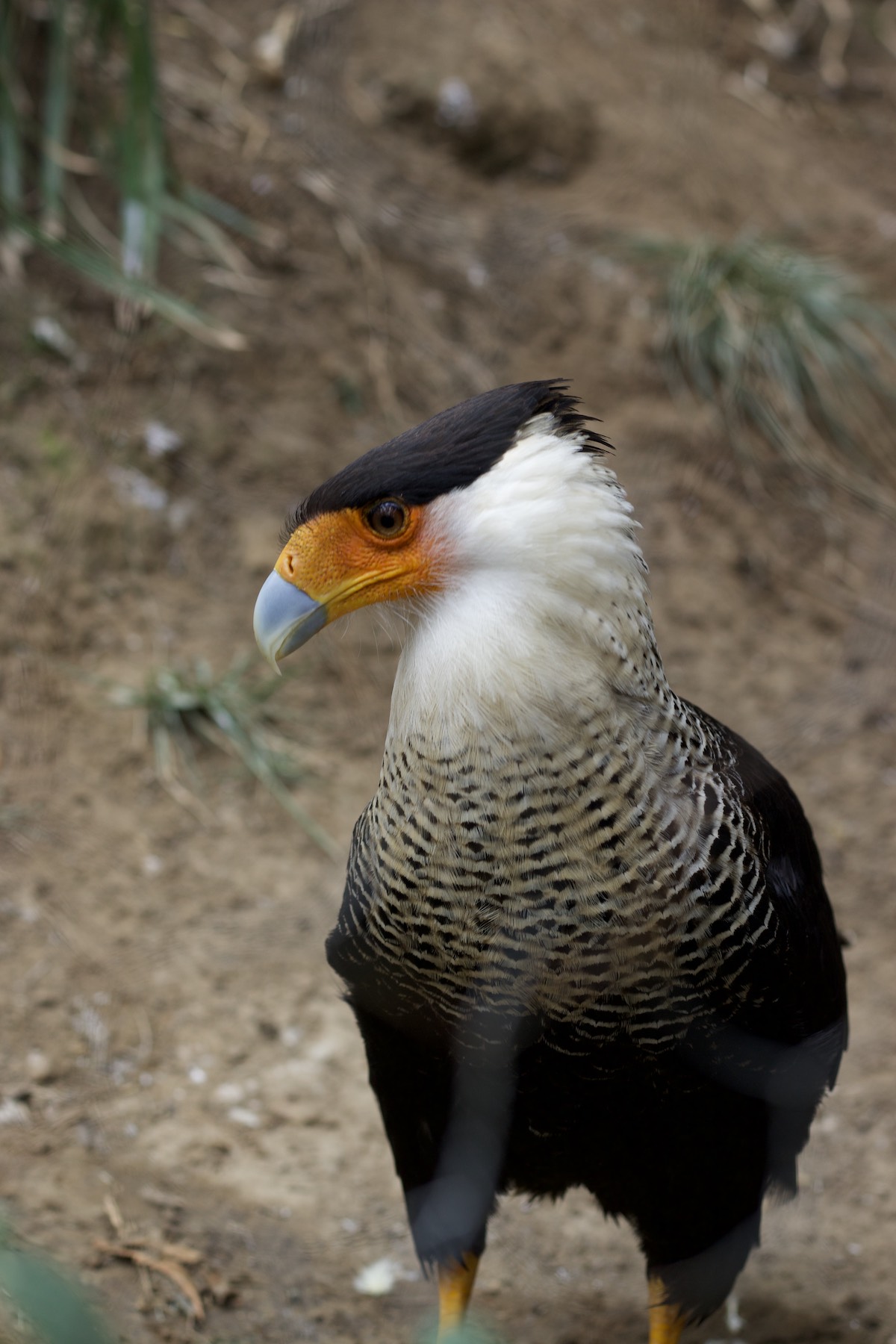
The design of Amaru Zoológico Bioparque makes brilliant use of its hillside location by integrating all the enclosures into the cliff-face, giving the animals plenty of room to roam. The clever use of fences and wires creates a more open environment, making it feel like the animals aren’t confined.
What’s truly inspiring is that Amaru also serves as a rescue center for wildlife saved from dire situations, such as illegal trafficking. Many of the animals here were rescued and can’t be returned to the wild, so the zoo provides them with a safe haven.
Most of the creatures you’ll encounter are native to Ecuador, and as we ventured deeper into the lush forest surroundings, we became more enchanted with both the zoo and its inhabitants. It’s a place that truly celebrates and protects Ecuador’s rich biodiversity.
As we wandered through Amaru Bioparque, the enclosures were only a short walk apart, yet each turn felt like stepping into a new adventure. You never quite knew what you’d encounter next, which kept the experience exciting.
At one point, we came across a cuchucho (an Andean raccoon-like animal) that had somehow escaped its enclosure. But instead of running away, it was actually trying to climb back over the fence to return! I’ve never seen an animal so determined to get back into its habitat before—it was both surprising and endearing to witness.
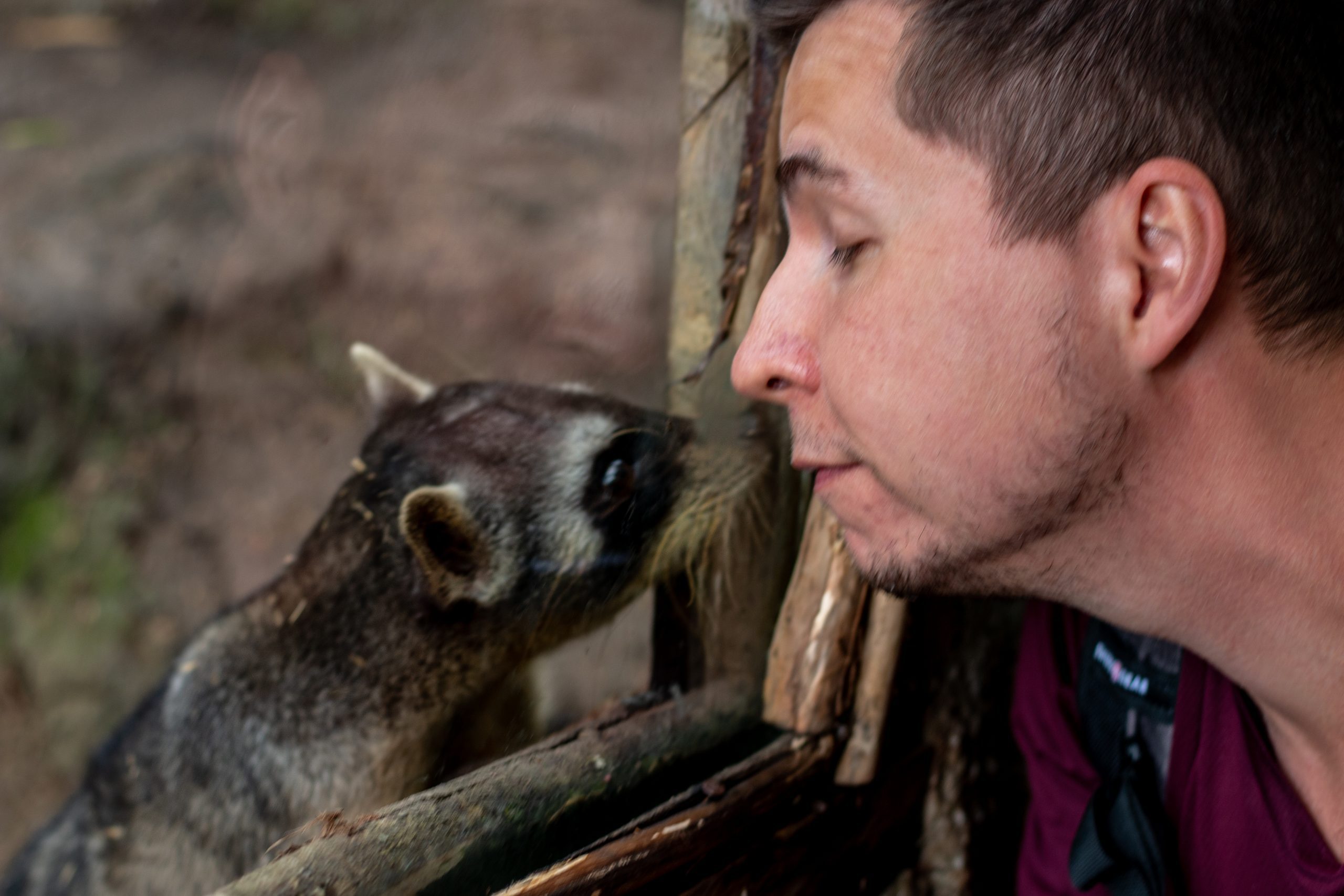
I loved how tapir and capybaras are sharing the same area!
Have questions about your upcoming Galapagos trip? Join my Galapagos Reddit community and ask other travelers who recently visited the islands. Get up-to-date tips, real experiences, and honest advice from other travelers (I ban tour agencies and resellers).
The large cats were my favorite part of the afternoon. In front of us, the pumas were hand-fed raw meat through the cage. That scene was something I have never seen before.
When exploring Amaru Bioparque, it’s important to stay cautious and always follow the park’s rules and regulations. Thankfully, most of the instructional signage is in English, making it easier for visitors like us to navigate safely.
One of the highlights for me was the chance to see the Andean bears. I had been looking forward to this moment, and it was truly special to finally see them up close. Watching these incredible creatures in person was an experience I won’t forget!

The macaws were not caged and were simply sitting in the trees distributed across the zoo’s territory.
The monkeys were also all over the place, crawling all over the zoo workers to grab food from their pockets.
Because some animals run freely around the park, it is highly advisable to not leave your children unsupervised.
Wildlife in Amaru Zoo
The Amaru zoo houses many different wildlife species which mostly are endemic to Ecuador. Aside from the animals mentioned above, we also saw other animals around the park such as:
- Alpacas
- Capybara
- Peacocks
- Llama
- Falcon
- Hawk
- Alligator
- Andean Deer
- Andean Condors
- Andean squirrels
- Tigers
- Gian tortoises
- Peccary
- African lions
- Ducks
- Frogs
There are various bird species in the park if you enjoy bird watching. Some of which I am unfamiliar with.
While these birds are allowed to roam the zoo, I still feel sorry for them. I feel that birds should be allowed to fly freely in the sky rather than being confined to an enclosure (no matter how wide it is).
Trust me, while most visitors focus on Cuenca’s colonial center, hidden gems like Amaru Bioparque show a completely different side of the city! Want to experience both the cultural highlights and unique attractions without missing anything special? Get a FREE expert itinerary from my recommended local agency. Your booking supports this blog and local Ecuadorian businesses.
Amaru Zoo Facilities
If you’re starting to feel tired from all the walking, there’s a nice covered area where you can sit down, relax, and enjoy a snack. We were glad to take a break here and grab a bite.
The little café nearby offers hot dogs, burgers, cookies, chips, and a variety of drinks. It’s also a good spot if you’re thinking of picking up some gifts—there’s a souvenir shop just around the corner with some unique items to take home.
For convenience, restrooms are located just down the hill from the snack bar, with another set near the entrance, making it easy to freshen up during your visit.
Amaru Zoológico Bioparque Rules and Restrictions
I have listed some of the zoo’s rules and regulations for your reference. Make sure to follow Amaru’s regulations for a pleasant and hassle-free zoo experience.
- Food is not allowed in the park. You can’t bring food inside and they are strictly prohibited on the grounds although bottled water is allowed.
- Touching animals and plants are not allowed. I know it is tempting to do so given you can see them up close but do not risk it.
- Bringing your pets is also not allowed.
- Do not go over the barriers and enclosures.
- Visitors are also not allowed to feed the animals in the zoo.
- Smoking is not allowed.
- Children should be left unsupervised. Do not leave your kids wandering alone around the park.
What to Bring
We have listed a few essentials that you should not forget to bring on your trip to Amaru zoo.
- Sunscreen
- Compact umbrella
- Sunvisor or cap
- Comfortable and durable footwear

Planning trip to Ecuador?
My wife and I rented a car for 15 days and traveled from the northern part of Ecuador to the south, visiting amazing cities like Quito, Otavalo, Baños, Cuenca, and Guayaquil. Along the way, we explored iconic places such as Cotopaxi National Park, Quilotoa Lake, and many more breathtaking destinations.
Not many blogs cover traveling in Ecuador in detail, so I spent nearly three weeks creating this comprehensive Ecuador travel guide based on our trip. It’s packed with everything you need to know, and honestly, I consider it the best free travel guide about Ecuador out there.
If you’re planning a trip to Ecuador, don’t forget to use my link for discounted hotel prices through Booking.com. It’s a great way to support my blog while saving money on your accommodations!
Bottom Line
Overall, my wife and I had an amazing day at Amaru Zoológico Bioparque. The experience was truly unique, and we were absolutely blown away by how different this zoo felt compared to any other we’ve visited around the world.
The trip was both educational and adventurous, making it a perfect outing for families or groups of friends looking for something unique to do. For us, it wasn’t just about seeing the animals—it opened our eyes to the challenges these creatures face. It really hit home that we need to be more conscious of our environment to help protect these animals, allowing them to live freely and peacefully in their natural habitats.
If you’re planning a trip to Cuenca, I can’t recommend exploring Amaru Zoológico Bioparque enough. It’s a must-add to your itinerary if you want a truly enriching experience of Cuenca, Ecuador.
Plan perfect trip to Ecuador & Galapagos
I spent countless hours researching everything about traveling to Ecuador, and I created this blog for fellow travel enthusiasts who want the best, most reliable information. But if you want to save time, we’ve partnered with the top local agency to plan your dream trip.

